The principle objective is to investigate the best method for determining an optimal location for PMUs and FACTS devices, so that the entire power system can be completely observable and controllable. This paper presents a simple and effective method for optimal placement of PMUs and FACTS devices. A voltage stability based weak bus screening method has been utilized to select critical buses for determining power system stability. An algorithm is used for the PMU placement to determine optimal PMU locations for the system observability. This paper deals with simulation of IEEE 14-bus power system using Statcom & UPFC to improve the power quality. The UPFC is also capable of improving transient stability in a power system. The real and reactive powers can be easily controlled in a power system using a UPFC system. The circuit model for UPFC is developed using rectifier and inverter circuits. The Matlab simulation results are presented to validate the model. The proposed method is tested on the IEEE 14-bus system & 8-bus system for observability & controllability analysis
Keywords |
| Phasor measurement unit (PMU), observability, controllability, voltage stability, FACTS. |
I. INTRODUCTION |
| The electric transmission grids operate as a hugely complex machine. Recent history shows that minor instability in
one part of the grid can lead to catastrophic failure of large parts of the system. For that and many other reasons, efforts
are underway to create a new, Smart Grid. The new grid will be modernized and intelligent, utilizing a number of
advanced computing, networking and measurement technologies. It will enable efficient energy usage, increased
reliability, and integration of alternative energy sources such as wind and solar. |
| One of those new technologies is a measurement device known as a Phasor Measurement Unit (PMU). PMUs will
play a critical role in monitoring stability throughout the Smart Grid. They will provide the precision knowledge
necessary to minimize and control power outages and avoid problems such as cascading blackouts. |
| In the present day scenario, power generations are increasing rapidly to meet the increase in demand due to heavily
loaded customers. Consequently, the transmission system become more stressed, which in turn makes the system more
vulnerable to stability and security problems. In this process, the voltage at different load buses may violate their limits
and lead to voltage collapse. Hence maintaining voltages at all load buses within the specified limits and also
maintaining voltage stability through proper reactive power allocation is a critical problem in power system operation. |
| Further, in a power system, the power generation and load must balance at all times. If the voltage is increased up
with increase in load, then there will be consequent drop in frequency and which may result in system collapse.
Alternatively, if there is inadequate reactive power, the system may have voltage collapse. Hence, to control reactive
power flow the voltage regulation devices or compensation devices are used such as FACTS controllers to obtain
desired voltage through proper reactive power support. |
| Identification of the weakest bus in a transmission network that is more prone to voltage collapse is of great
important in voltage stability studies. |
| With the increased loading and exploitation of the power transmission system, the problem of voltage stability and
voltage collapse attracts more and more attention. A voltage collapse can take place in systems or sub systems and can
appear quite abruptly which requires the improved continuous monitoring of the system state and this can be done by
PMUs. |
| The principle objective is to investigate the best method for determining an optimal location for PMUs and FACTS
devices, so that the entire power system can be completely observable and controllable. |
| Voltage stability is a problem in power system which are heavily loaded, faulted or have a shortage of reactive
power. The nature of voltage stability can be analysed by examining the production, transmission and consumption of reactive power. The problem of voltage stability concerns the whole power system, although it usually has a large
involvement in one critical area of the power system. |
| The above task can only be accomplished when there is proper fast control over power flow in transmission system.
With the emergence of high power semiconductor switches, a number of control devices under the generic name of
flexible ac transmission system (FACTS) have come under active consideration to achieve the above objectives. In
FACTS controllers, by virtue of their fast controllability, are expected to maintain the stability and security margin of
highly stressed power systems. However, to achieve the good performance of these controllers, proper placement of the
controlling devices in the grid is as important as an effective control strategy. |
II. OBSERVABILITY ANALYSIS USING PMUS |
| Topological observability uses the graph theoretical concepts to find the locations for the measurement placement
and thus, to make the system topologically observable. A brief background of PMU based topological observability is
given as follows. |
| PMU based Topological Observability: |
| For making the system topologically observable using PMUs, following simple rules are used, |
| 1. If voltage phasor and current phasor at one end of a branch are known, voltage phasor at the other end of the branch
can be calculated using Ohm‟s law. |
| 2. If voltage phasors at both the ends of a branch are known, branch current can be calculated. |
| 3. If there is zero injection bus without a PMU, whose outgoing currents are known except for one, then the unknown
outgoing current can be calculated using Kirchhoff‟s Current Law (KCL). |
| Based on these rules, two types of measurements can be obtained from PMUs. The PMU bus voltage phasor and
outgoing currents from PMU bus are defined as direct measurements and measurements obtained by utilizing the rules
(1-3) are defined as pseudo measurements. Using this concept, many graph theoretical methods e.g. depth first search,
spanning tree based methods, integer linear programming based method [3-6] have been suggested to place PMUs in
the system for ensuring the full topological observability of the system. In this work, these methods have been modified
to determine optimal PMU locations. The proposed method is explained in the section IV. |
III. PROXIMITY INDICATOR FOR VOLTAGE COLLAPSE PREDICTION |
| The voltage stability index or proximity is the device used to indicate the voltage stability condition formulated
based on a line or a bus [2]. The proposed method builds on recent advanced in the areas of real-time voltage stability
monitoring and control. The maximum threshold is set at unity as the maximum value beyond which this limit system
bifurcation will be experienced. The VSI is derived from the voltage quadratic equation at the receiving bus on a twobus
system. The general two-bus representation is illustrated in Figure 1. |
The mathematical equation for VSI was formulated from a line model as follows: Taking the symbols „i‟ as the sending bus and „j‟ as the receiving bus. Hence, the fast voltage stability index, VSI can be defined by  |
| where Zij is the line impedance and Xij is the line reactance connecting bus „i‟ and bus` j‟ while, Vi is the voltage at the
sending bus and Qj is the reactive power at the receiving bus. The value of VSI that is evaluated close to 1.00 indicates
that the particular line is closed to its instability point. Therefore VSI has to be maintained less than 1.00 in order to
maintain a stable system. By using this Stability Index, the Voltage stability analysis is conducted and identifies the
critical area in the power system for stability enhancements. |
| The Proposed algorithm was implemented in MATLAB 7 and executed on Pentium 4 machine. The assumption of this
procedure for the implementation of this index methodology as follows |
| • Load buses are selected one at a time |
| • Voltage Stability Index is computed with an increase in reactive power gradually at chosen load bus until the load
flow solution fails to give results when keeping the real power remain constant. |
| • Voltage Stability Index of every line in the system is computed with an assumption that the real and reactive power
loading of all other buses remains constant. |
IV PROPOSED PMU PLACEMENT METHOD |
| In order to illustrate topological observability and optimal placement of PMUs to ensure the full observability, a path
finding algorithm has been used in this work to determine optimal PMU location. A brief description of the algorithm is
given below. |
| The blacksmith algorithm observes the bus data. Blacksmith algorithm then searches through every vertex and
determines an associated cost in following that path. Once all costs have been determined, the maximum value of the
ratio of h(x) and g(x) is selected and that path is explored. If full coverage hasn‟t been achieved, the vertices will be
searched again including the path that has been previously explored and their associated costs will be computed. The
maximum value of the ratios will be selected and that path will be explored. This process continues until a solution is
found. The flowchart of the proposed method is shown in Fig. 3. |
| The final optimal solution so obtained ensures the complete Observability. |
V. STATIC SYNCHRONOUS COMPENSATOR AND VOLTAGE SOURCE INVERTER |
| The Static Synchronous Compensator (STATCOM) is shunt connected reactive compensation equipment, which is
capable of generating and /or absorbing reactive power whose output can be varied so as to maintain control of specific
parameters of the electric power system. The STATCOM provides operating characteristics similar to a rotating
synchronous compensator without the mechanical inertia .The STATCOM employ solid state power switching devices
and provide rapid controllability of the three phase voltages, both in magnitude and phase angle. |
| The STATCOM basically consists of a step-down transformer with a leakage reactance, a three phase GTO/IGBT
voltage source inverter (VSI), and a DC capacitor. The AC voltage difference across the leakage reactance produces
reactive power exchange between the STATCOM and the power system, such that the AC voltage at the bus bar can be
regulated to improve the voltage profile of the power system, which is the primary duty of the STATCOM. |
| However a secondary damping function can be added into the STATCOM for enhancing power system oscillation
stability. The basic objective of a VSI is to produce a sinusoidal AC voltage with minimal harmonic distortion from a
DC voltage. |
| The principle of STATCOM operation is as follows: The voltage is compared with the AC bus voltage system.
When the AC bus voltage magnitude is above that of the VSI magnitude; the AC system sees the STATCOM as
inductance connected to its terminals. Otherwise if the VSI voltage magnitude is above that of the AC bus voltage
magnitude, the AC system sees the STATCOM as capacitance to its terminals. If the voltage magnitudes are equal, the
reactive power exchange is zero. If the STATCOM has a DC source or energy storage device on its DC side, it can
supply real power to the power system. This can be achieved by adjusting the phase angle of the STATCOM terminals
and the phase angle of the AC power system. When phase angle of the AC power system leads the
VSI phase angle, the STATCOM absorbs the real power from the AC system, if the phase angle of the AC power
system lags the VSI phase angle, the STATCOM supplies real power to AC system. The real and reactive powers in
STATCOM are given by the following equations 1 and 2. |
| P12 = (V1 V2 / X12) Sin (δ1-δ2) -------- (1) |
| Q12 = (V2/ X) (V1- V2) -------- (2) |
| System Bus VAC |
| The Voltage Source Converter or Inverter (VSC or VSI) is the building block of a STATCOM and other FACTS
devices. A very simple inverter produces a square voltage waveform as it switches the direct voltage source on and off.
The basic objective of a VSI is to produce a sinusoidal AC voltage with minimal harmonic distortion from a DC
voltage. |
| In the last decade commercial availability of Gate Turn off thyristor (GTO) devices with high power handling
capability, and the advancement of other types of power semiconductor devices such as IGBT‟s have led to the
development of controllable reactive power sources utilizing electronic switching converter technology [7]. These
technologies additionally offer considerable advantage over the existing ones in terms of space reduction and performance. The GTO thyristor enable the design of solid-state shunt reactive compensation equipment based upon
switching converter technology. |
| This concept was used to create a flexible shunt reactive compensation device named Static Synchronous
Compensator (STATCOM) due to similar operating characteristics to that of a synchronous compensator but without
the mechanical inertia. Single-line diagram of STATCOM is shown in Fig4. |
| The advent of Flexible AC Transmission systems (FACTS) is giving rise to a new family of power electronics
equipment emerging for controlling and optimizing the performance of power system, e.g. STATCOM, SSSC and
UPFC. The use of voltage source inverter (VSI) has been widely accepted as the next generation of the reactive power
controllers of the power system to replace the conventional VAR compensator, Such as the thyristor-switched
capacitors (TSC) and thyristor controlled reactors (TCR). |
| New type of STATCOM based on VSI with phase shifted SPWM is given by Liang[8], Modeling and simulation of
DSTATCOM is dealt by Giroux[9]. Dynamically voltage restoration with injection is given by [10]. Compensation of
voltage sag by [11]. Power Electronic solution to power quality is given by [12].Analysis of thyristor based STATCOM
is given by Song[13].overview of STATCOM technologies is given by Liu[14].Transfer capability improvement using
FACTS is given by Arun[15]. |
| The above literature does not deal with simulation of eight bus system using SIMULINK. This work deals with
modeling and simulation of eight bus system using STATCOM. The present work uses a voltage source inverter circuit
comprising a transformer with a power output end coupled to a load. A power driver unit is connected between the two
power output ends. Circuit diagram of voltage source inverter is shown in Fig 5. .T1, T2 and T3, T4 conducts
alternatively to produce the AC output. |
| PRINCIPLE OF UPFC |
| The basic components of the UPFC are two voltage source inverters (VSIs) sharing a common dc storage capacitor,
and connected to the power system through coupling transformers. One VSI is connected to in shunt to the transmission
system via a shunt transformer, while the other one is connected in series through a series transformer.
A basic UPFC functional scheme is shown in fig.5a. |
| The series inverter is controlled to inject a symmetrical three phase voltage system (Vse), of controllable magnitude
and phase angle in series with the line to control active and reactive power flows on the transmission line. So, this inverter will exchange active and reactive power with the line. The reactive power is electronically provided by the
series inverter, and the active power is transmitted to the dc terminals. The shunt inverter is operated in such a way as
to demand this dc terminal power (positive or negative) from the line keeping the voltage across the storage capacitor
Vdc constant. So, the net real power absorbed from the line by the UPFC is equal only to the losses of the inverters and
their transformers. The remaining capacity of the shunt inverter can be used to exchange reactive power with the line so
to provide a voltage regulation at the connection point. |
| The two VSI‟s can work independently of each other by separating the dc side. So in that case, the shunt inverter is
operating as a STATCOM that generates or absorbs reactive power to regulate the voltage magnitude at the connection
point. Instead, the series inverter is operating as SSSC that generates or absorbs reactive power to regulate the current
flow, and hence the power flows on the transmission line. |
| The UPFC has many possible operating modes. In particular, the shunt inverter is operating in such a way to inject a
controllable current, ish into the transmission line. The shunt inverter can be controlled in two different modes: |
| VAR Control Mode: The reference input is an inductive or capacitive VAR request. The shunt inverter control
translates the var reference into a corresponding shunt current request and adjusts gating of the inverter to establish the
desired current. For this mode of control a feedback signal representing the dc bus voltage, Vdc, is also required. |
| Automatic Voltage Control Mode: The shunt inverter reactive current is automatically regulated to maintain the
transmission line voltage at the point of connection to a reference value. For this mode of control, voltage feedback
signals are obtained from the sending end bus feeding the shunt coupling transformer. |
| The series inverter controls the magnitude and angle of the voltage injected in series with the line to influence the
power flow on the line. The actual
value of the injected voltage can be obtained in several ways. |
| Direct Voltage Injection Mode: The reference inputs are directly the magnitude and phase angle of the series voltage. |
| Phase Angle Shifter Emulation mode: The reference input is phase displacement between the sending end voltage
and the receiving end voltage. |
| Line Impedance Emulation mode: The reference input is an impedance value to insert in series with the line
impedance. |
| Automatic Power Flow Control Mode: The reference inputs are values of P and Q to maintain on the transmission
line despite system changes. |
| A. ObservabilityAnalysis |
| The proposed method for optimal PMU placement has been tested on the IEEE 14-bus system. |
 |
| B. Voltage Stability Analysis |
| To validate the performance of the indicator for voltage stability analysis, 8-bus test system is used. From the
analysis, buses 1and 2 are more prone to voltage collapse. |
| A eight bus system is considered for simulation studies. The circuit model of eight bus system is shown in Fig 6a.
Each line is represented by series impedance model. Shunt capacitance of the line is neglected. Additional load is added
in parallel with load-1 by closing the breaker in series with the load. Scopes are connected to display the voltages across
the two loads. At t = 0.25sec, additional load is connected. Voltage across the load-1 decreases as shown in Fig 6b.This
fall is due to the increased voltage drop. |
| Eight bus system with STATCOM is shown in Fig.7a.STATCOM is connected in the line between buses 4 & 8. The
voltages across Load-1 and Load-2 are shown in Fig.7b. It can be seen that the voltage across load-1 decreases and
resumes to the rated value due to the injection of voltage by the STATCOM. Thus the STATCOM is able to mitigate
the voltage sag produced by the additional load. Power quality is improved since the voltage reaches normal value. |
| Eight bus system with UPFC is shown in Fig.8a.UPFC is connected in the line between buses 4 & 8. The voltages
across all the Loads are shown in Fig.8b. It can be seen that the voltage across load-1 decreases and resumes to the
rated value due to the injection of voltage by the UPFC. Thus even UPFC is able to mitigate the voltage sag produced
by the additional load. Power quality is improved since the voltage reaches normal value. |
| When the transmission line is without UPFC, the real and reactive power flow cannot be controlled. Fig. 9a shows
the active power through the line without UPFC. Fig. 9b shows the active power flow through line which is controlled
by UPFC. Transmission capability of the existing transmission line is highly improved with the presence of UPFC. But
the difference between the sending-end real power and receiving end real power is high in the transmission line with
UPFC. This is due to the increase in transmission losses, which include losses in the both converters and coupling
transformers. The reactive power flow through the transmission line with and without UPFC is shown in fig. 10. The
raise in the transmission capability is noticed from the simulation results. |
IV. CONCLUSION |
| This paper has suggested a simple Programming based method for the optimal placement of PMUs to ensure
complete topological observability of the system. The paper uses voltage stability index to determine weak bus in the
system. The proposed observability and controllability analysis has been tested on the IEEE 14-bus system and 8 bus
system respectively. The proposed method is quite effective and simple to adopt. |
| This paper uses STATCOM & UPFC to improve the voltage stability in a multi-bus system. The load voltage
reaches rated value with in 0.25sec. The simulation results of eight bus system with and without STATCOM & UPFC
are presented. The simulation studies indicate the usefulness of STATCOM & UPFC to mitigate the voltage sag.
Transmission capability of the existing transmission line is highly improved with the presence of UPFC. The raise in
the transmission capability is noticed from the simulation results. |
Figures at a glance |
 |
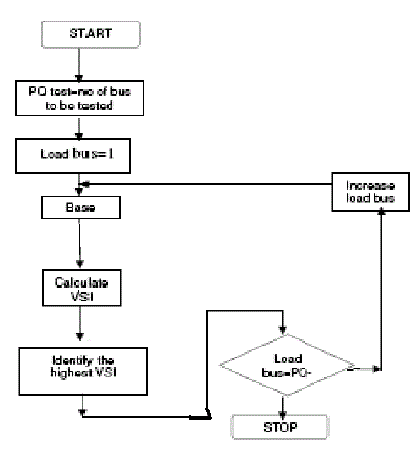 |
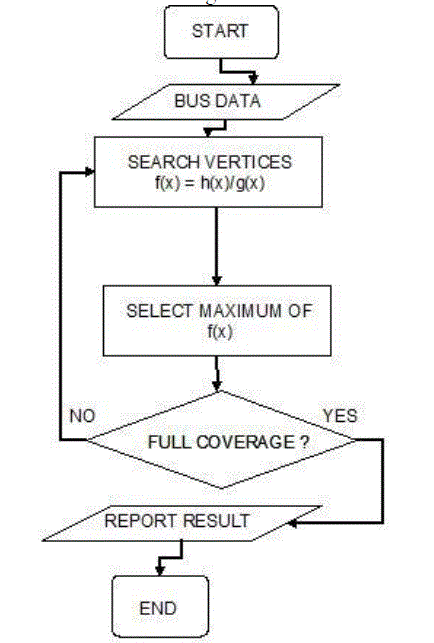 |
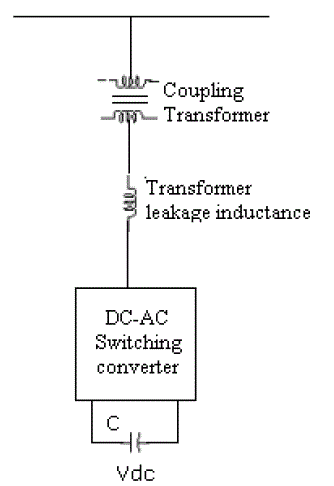 |
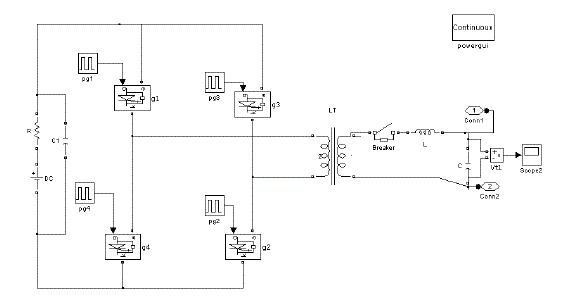 |
| Figure 1 |
Figure 2 |
Figure 3 |
Figure 4 |
Figure 5 |
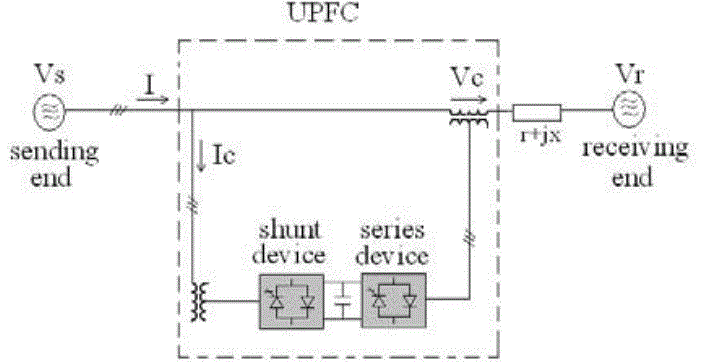 |
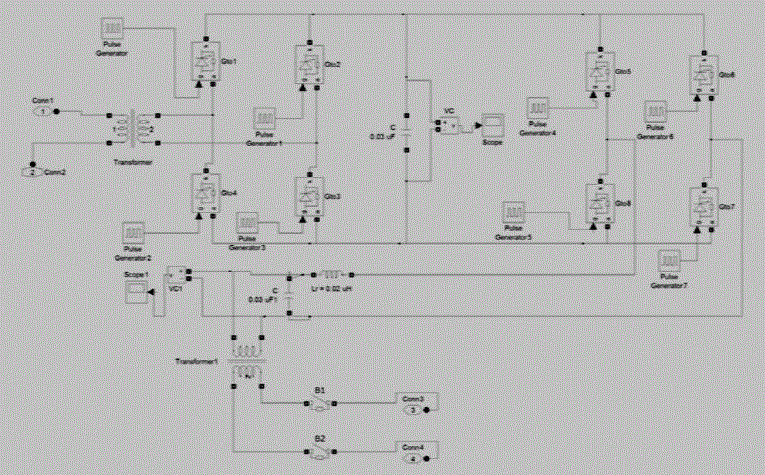 |
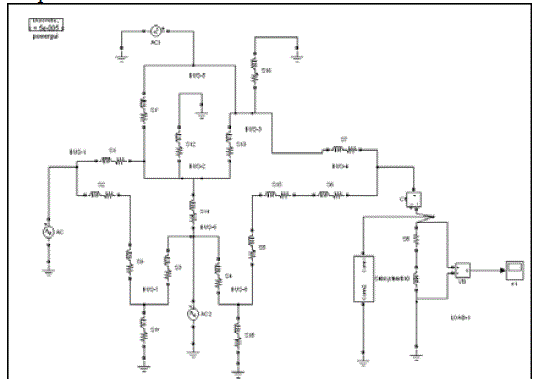 |
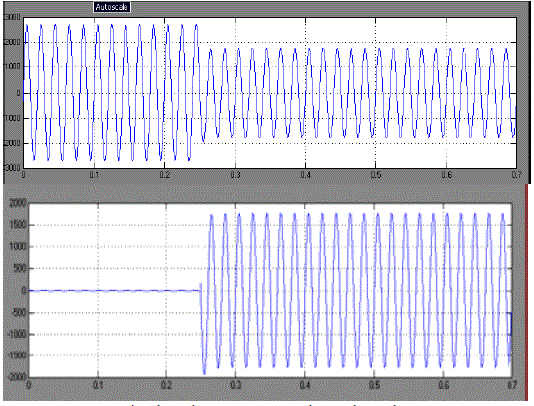 |
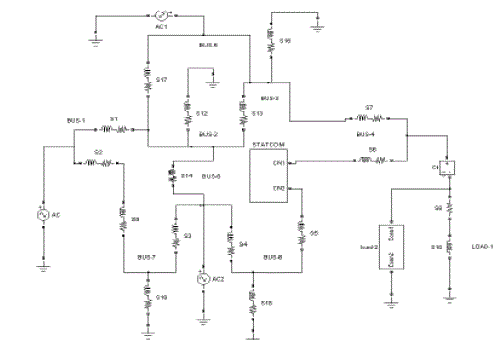 |
| Figure 5a |
Figure 5b |
Figure 6a |
Figure 6b |
Figure 7a |
 |
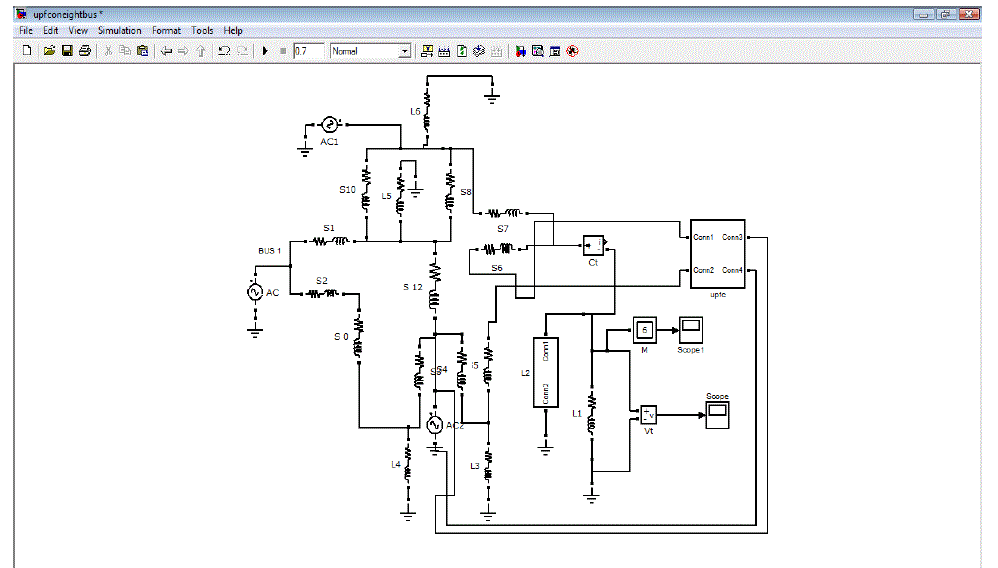 |
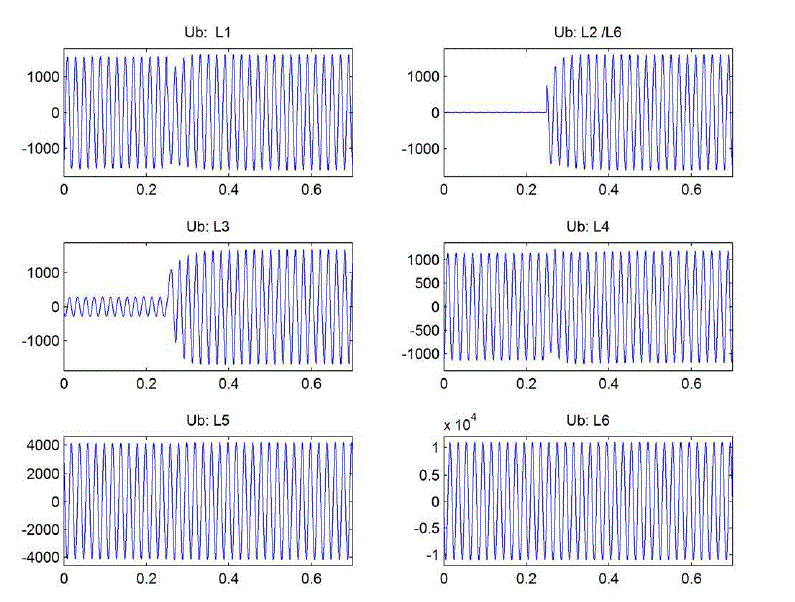 |
| Figure 7b |
Figure 8a |
Figure 8b |
|
| |
References |
- N.G.Hingorani and L.Gyugyi, understanding FACTS, Concepts and technology of Flexible AC Transmission systems, Piscataway, NJ; IEEE Press, 2000.
- Liu Baozhu and Li Bolong, 2008 “A Novel Static Voltage Stability Index based on Equilibrium Solution region of Branch Power Flow,” DRPT 2008 6-9 Nanjing China
- R F.Nuqui and A. G. Phadke, “Phasor measurement unit placement techniques for complete and incomplete observability,” IEEE Trans on Power Delivery, vol. 20, no. 4, Oct. 2005, pp. 2381- 2388.
- T. A. Baldwin, L. Mili, M. B. Boisen, and R. Adapa, “Power system observability with minimal phasor measurement placement,” IEEE Transaction on Power Systs, vol. 8, no. 2, May 1993, pp. 2381- 2388.
- G. B. Denegri et al, “A security oriented approach to PMU positioning for advanced monitoring of a transmission grid,” Proceedings of Power System Technology, PowerCon, 2002, vol. 2, pp. 798-803.
- B. Xu and A. Abur, “Observability analysis and measurement systems with PMUs,” IEEE Power Systems Conference and Exposition, , 2004, pp. 943-946
- Static Synchronous compensator, CIGRE, working group 14.19,1998.
- Y.Liang and C.O.Nwankpa ,”A new type of STATCOM based on cascading voltage- source inverter with phase Shifted unipolar SPWM”.
- P.Giroux, G.Sybille, and H. Le-Huy,” Modeling and simulation of a distribution STATCOM using simulink‟s power system blockset”, in proc. Annu. Conf. IEEE Industrial Electronic society, pp, 990-994.
- S.S.Choi, B.H.Li,&D.D.Vilathgamuwa, “Dynamic voltage restoration with minimum energy injections”, IEEE Trans., power system, vol.15, pp51-57, Feb-2000.
- M.H.Haque “compensation of Distribution system voltage sag by DVR and DSTATCOM”, Power Tech proceedings 2001,IEEE Porto Volume: 1, sept.2001.
- AmbraSannino,JanSvesson and Tomas Larsson. “Power- electronic Solutions to Power Quality Problems” Electric Power Systems Research Volume 66, Issue 1, July 2003, Pages71-82.
- Jianyecuen,Shan song, Zanjiwang, “Analysis and Implement of Thyristor based STATCOM”, 2006.International Conference on Power System technology.
- QingguangYu,PeiLi,Wenhua, Liu, Xiaorongxie,overview of STATCOM Technologies”,2004 IEEE International Conference on Electric utility Deregulation,Restructuring and power Technologies,April 2004.
- K.NarashimhaRao, J.Amarnath and K.Arunkumar, “voltage constrained available transfer capability enhancement with FACTS devices”,APRN Journal of Engineering and Applied sciences, vol.2,No.6,Dec.2007
|